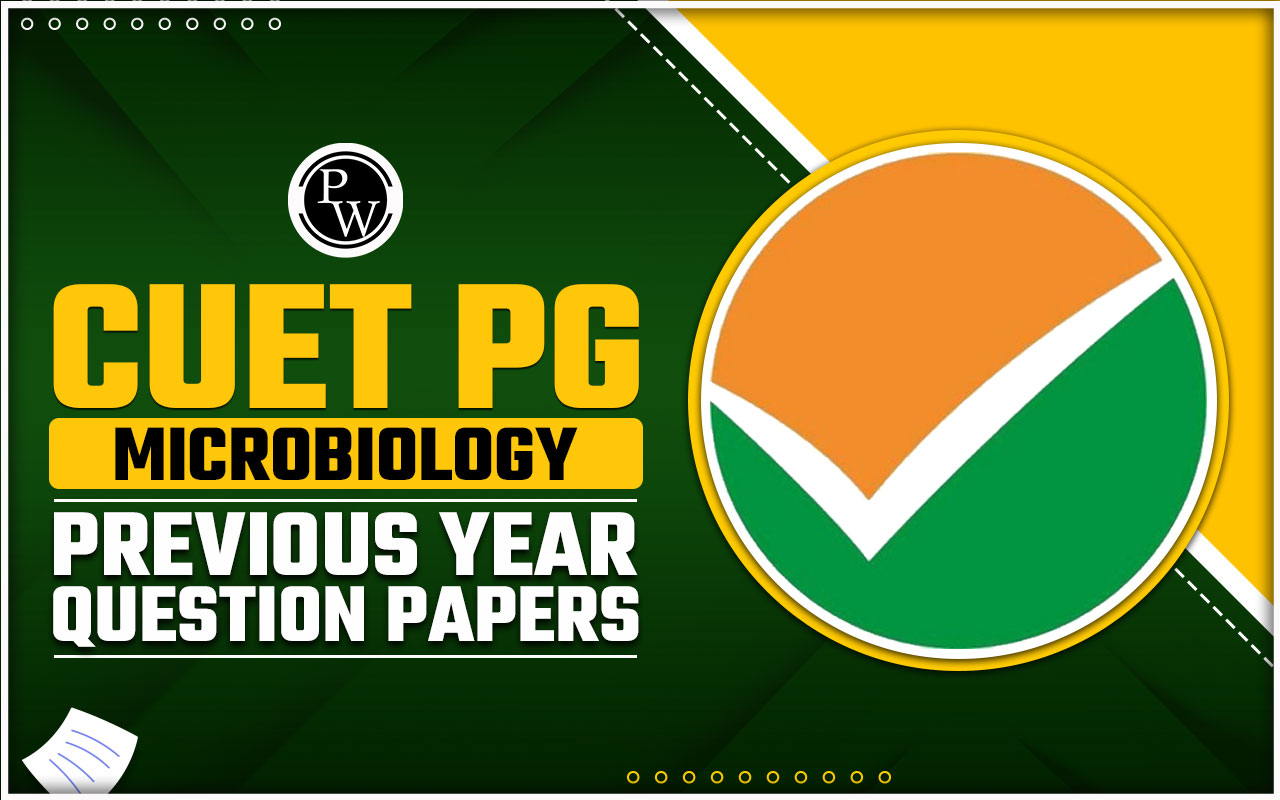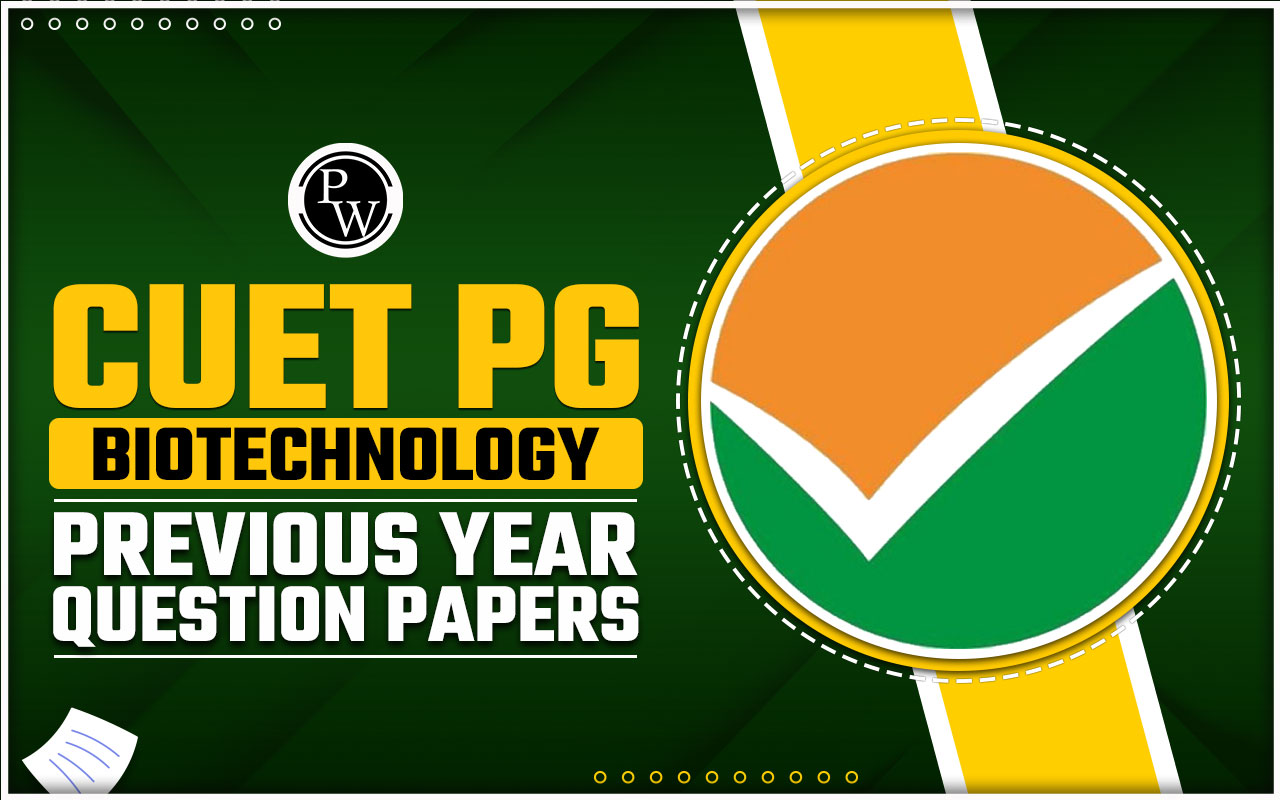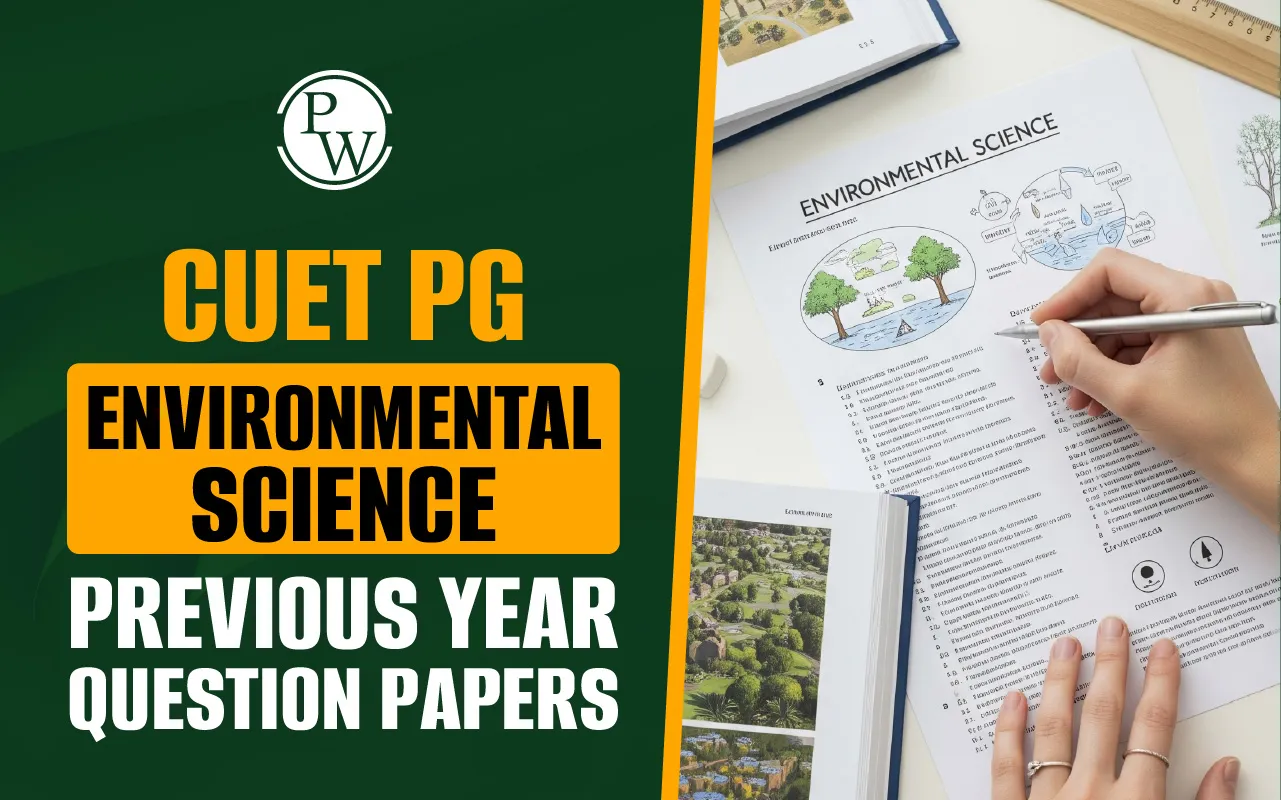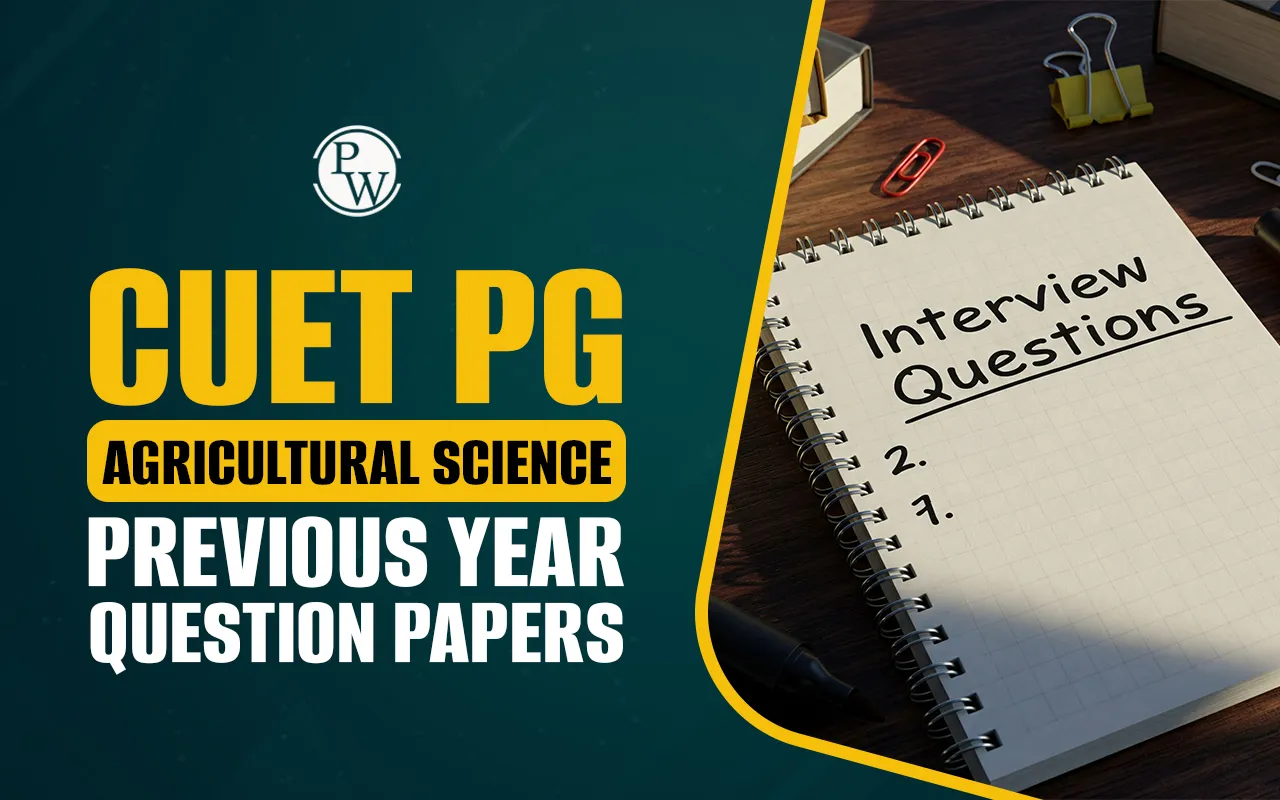
CUET PG Environmental Science Syllabus 2026: The National Testing Agency (NTA) has not yet released the official syllabus for CUET PG Environmental Science 2026. In the meantime, candidates are encouraged to refer to the previous year’s syllabus for preliminary guidance. Based on past trends, the syllabus is expected to include major areas such as Ecology, Environmental Chemistry, Biodiversity and Conservation, Environmental Pollution, Climate Change, Environmental Impact Assessment, Renewable and Non-Renewable Resources, Environmental Microbiology, and Sustainable Development. Aspirants are advised to regularly check the official CUET PG portal for updates while using the prior syllabus as a reliable preparation framework.
CUET PG Environmental Science Syllabus 2026 Overview
The CUET PG Environmental Science Syllabus 2026 highlights the essential subjects and topics that candidates need to study for the CUET PG 2026 Environmental Science Exam. Structured in line with the exam pattern, the syllabus is expected to cover core areas such as ecology, environmental chemistry, climate change, and sustainable development.
| CUET PG Environmental Science Syllabus 2026 Overview | |
| Aspect | Details |
| Exam Name | CUET PG Environmental Science Exam 2026 |
| Conducting Body | National Testing Agency (NTA) |
| Syllabus Coverage | Ecology, Environmental Chemistry, Climate Change, Pollution, Sustainability |
| Exam Mode | Computer-Based Test (CBT) |
| Exam Duration | 105 minutes |
| Question Type | Multiple Choice Questions (MCQs) |
| Total Questions | 75 |
| Medium of Exam | English and Hindi |
| Syllabus Format | Will be available as CUET PG Environmental Science Syllabus PDF |
CUET PG Environmental Science Syllabus PDF
Candidates preparing for the CUET PG Environmental Science Exam 2026 are encouraged to consult the CUET PG Environmental Science Syllabus PDF based on the previous year’s framework, as the official 2026 syllabus is yet to be released. This provisional syllabus covers key topics such as ecosystem dynamics, environmental pollution, climate change, biodiversity conservation, and sustainable resource management. While aligning their preparation with the CUET PG Environmental Science Exam Pattern, candidates can use this reference to anticipate major subject areas. Once officially published, the CUET PG Environmental Science Syllabus PDF will be made available on the official website and other academic platforms.
CUET PG Environmental Science Syllabus 2026 Topics
The CUET PG Environmental Science Syllabus 2026 is organized into distinct subjects, each addressing key components of environmental science. These subjects typically include Ecology, Environmental Chemistry, Biodiversity and Conservation, Environmental Pollution, Climate Change, Environmental Microbiology, Renewable and Non-Renewable Resources, Environmental Impact Assessment, and Sustainable Development. A subject-wise structure allows candidates to focus on each topic individually, promoting a well-rounded and systematic approach to exam preparation.
| CUET PG Environmental Science Syllabus 2026 | |
| Subject Area | Topics Covered |
| Earth Sciences | Structure and composition of Environment: Atmosphere, Hydrosphere, Lithosphere- Earth Processes- Biogeochemical Cycles- Meteorology- Climate Change- Origin and Evolution of Earth- Mineral and Power Resources in India |
| Physical and Chemical Sciences | Fundamentals- Atmospheric Chemistry- Water Chemistry- Geochemistry- Green Chemistry- Water physical characteristics, buffering capacity- Essential and trace elements- Bio-molecules- Bio-geochemical Cycles: Carbon, Nitrogen, Phosphorus- Hydrological Cycle- Toxicity of Heavy Metals |
| Life Sciences | Origin of Life- Evolution, Genetic Drift, Speciation- Cell Organelles & Division- Reproduction Modes- Principles of Inheritance, Epistasis- Mutations, Chromosomal and Extra-chromosomal Inheritance- DNA: Structure, Replication, Transcription, Translation, Repair- Protein Structure- Reverse Genetics |
| Photosynthesis & Physiology | Photosynthesis, Plant Growth Hormones- Dormancy, Germination- Respiration- Plant & Animal Systematics: Bryophytes, Tracheophytes, Gymnosperms, Angiosperms- Membrane Structure, Ion Transport, ATPase- Photoperiodism, Vernalization, RUBISCO- Animal Physiology, Diseases, Cell Culture |
| Ecology and Environment | Biosphere & Organizational Levels- Ecosystems: Structure, Types- Food Chain & Energy Flow- Population and Community Ecology- Biodiversity & Conservation |
| Microbiology and Biotechnology | Microbiology Principles- Microbiology of Air, Water, Soil, Sewage- Recombinant DNA Technology- Gene Cloning, Transposition- Biotech Applications: Medicine, Industry, Agriculture, Environment |
| Natural Resources Management | Forest, Water, Mineral, Marine, Energy Resources (Renewable & Non-renewable)- Sources, Threats, Conservation and Management |
| Global Environmental Issues | Ozone Depletion- Global Warming- Acid Rain- Smog- Sustainable Development |
| Environmental Pollution | Air, Water, Soil, Noise Pollution- Sources, Causes, Effects, Consequences |
| Waste Management | Solid Waste Disposal & Management- Waste-to-Energy Conversion |
| Instrumentation | Microscopy, Spectrophotometry- Centrifugation, Radioisotope Techniques- Electrophoresis, Chromatography- Blotting & Hybridization Techniques |
Steps to Download CUET PG Environmental Science Syllabus
CUET PG Environmental Science syllabus offers a comprehensive outline of the topics candidates need to cover for the entrance examination. Accessing the official syllabus is crucial for effective preparation, as it enables aspirants to concentrate on relevant subjects, understand the exam format, and plan their study schedule more efficiently. Follow the steps below to download the CUET PG Environmental Science Syllabus:
-
Visit the Official Website: Go to the National Testing Agency’s official portal at pgcuet.samarth.ac.in.
-
Navigate to the Syllabus Section: On the homepage, find and click on the “Syllabus” tab.
-
Choose Environmental Science: From the list of subjects, select CUET PG Environmental Science.
-
Download the Syllabus PDF: Click the download link to save the CUET PG Environmental Science Syllabu in PDF format for future use.
CUET PG Environmental Science Exam Pattern
The CUET PG Exam Pattern for Environmental Science Exam outlines the structure and format of the entrance test, helping candidates understand the distribution of questions, marking scheme, and time allocation. Familiarity with the exam pattern enables effective preparation, allowing aspirants to strategize their study plan and manage time efficiently during the exam.
| CUET UG 2026 Exam Pattern | |||||
| Section | Subject Options | Number of Questions | Duration | Marks | Question Type |
| Section IA | 13 languages (e.g., Hindi, English, Bengali, Tamil, Urdu) | 50 (attempt 40) | 60 minutes | 250 | MCQs on Reading Comprehension, Literary Aptitude, and Vocabulary |
| Section IB | Additional languages (e.g., French, German, Spanish) | 50 (attempt 40) | 60 minutes | 250 | MCQs on Reading Comprehension, Literary Aptitude, and Vocabulary |
| Section II | 23 domain-specific subjects (e.g., Physics, Chemistry, Mathematics, Biology, Economics, Accountancy) | 50 (attempt 40) | 60 minutes | 250 | MCQs based on NCERT Class 12 syllabus |
| Section III | General Aptitude Test (optional) | 50 (attempt 50) | 60 minutes | 250 | MCQs on General Knowledge, Current Affairs, General Mental Ability, Numerical Ability, Logical and Analytical Reasoning |
CUET PG Evironmental Science Exam Preparation Tips
Preparing for the CUET PG Environmental Science Exam demands a focused strategy, strong grasp of fundamental topics, and regular practice. An organized study plan helps in effectively covering the syllabus and enhances confidence ahead of the examination.
-
Understand the Syllabus Thoroughly: Focus on key areas like ecology, pollution, environmental chemistry, and biodiversity to prioritize your study.
-
Refer to Standard Textbooks and NCERTs: Build a strong foundation using trusted books and NCERT Environmental Science material.
-
Practice Previous Year Papers & Mock Tests: Regular practice helps familiarize you with the exam pattern and improves time management.
-
Stay Updated with Current Environmental Issues: Keep track of recent developments in climate change, sustainability, and government policies for application-based questions.
-
Make Concise Notes for Quick Revision: Prepare organized notes and highlight important definitions, processes, and laws to review efficiently before the exam.
CUET PG Environmental Science Syllabus 2026 FAQs
Has the official CUET PG Environmental Science Syllabus 2026 been released?
Which topics are expected to be covered in the CUET PG Environmental Science Syllabus 2026?
Where can I download the CUET PG Environmental Science Syllabus PDF?
What is the exam mode and duration for CUET PG Environmental Science?
How many questions are there in the CUET PG Environmental Science exam and what is the question type?










